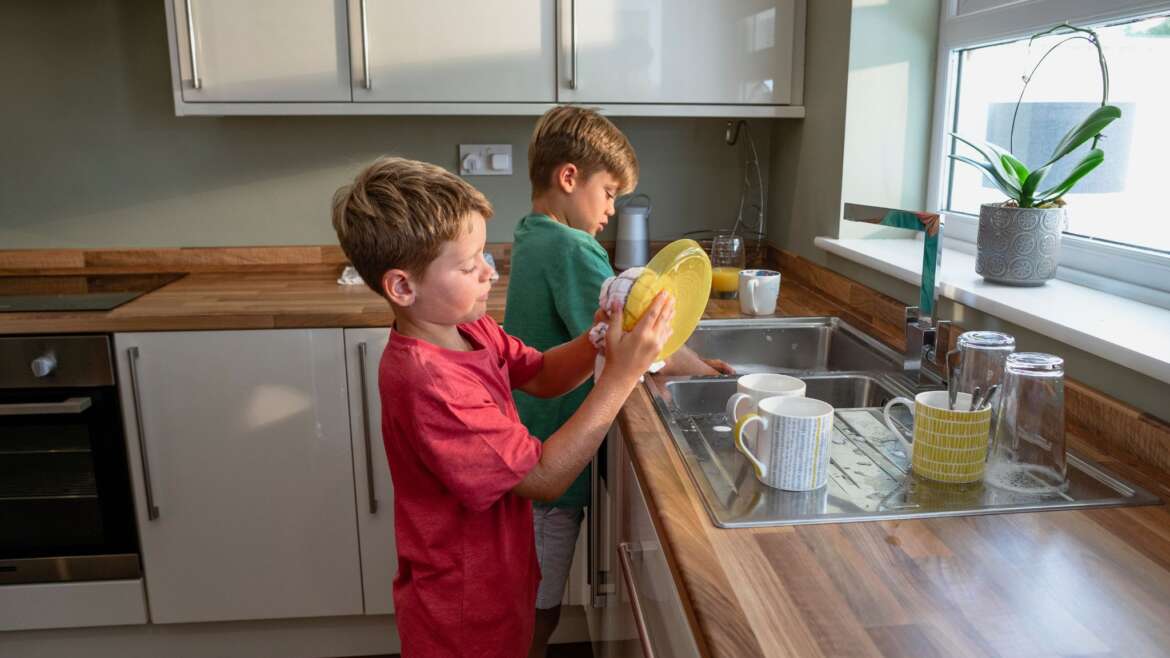Responsibility is an important trait for every child to learn. It’s essential for success in school and in life. But learning how to be responsible doesn’t happen automatically; it’s a learned process that requires effort and intention. Here are a few tips for helping your child learn responsibility:
Set Clear Expectations
The first step in teaching any valuable skill or trait is to set clear expectations. Start by explaining what responsibility is and how you expect them to embody it. This includes outlining the tasks you expect them to complete and how. If you ask them to pick up their toys, explain that you expect them to put everything in its designated place.
When you assign responsibilities, it may be worth providing a visual chart or list to help them fully grasp and keep track of them. Clearly communicate what you expect from each task or responsibility, and avoid being too vague. Children thrive when they know exactly what their objective is and why.
Assign Age-Appropriate Chores
When assigning household chores, make sure they’re age-appropriate. For younger children, their chores could include putting their toys away when they’re done playing with them, making their bed each morning or helping you sort the laundry on laundry day. If your child is a little older, you could have them set the table, feed pets or water plants. As they enter their pre-teen and teenage years, give them some more responsibilities by having them help prepare meals, wash dishes and take out the trash. Whatever chores you assign, the goal is to make sure your child can realistically complete them on their own.
Encourage Them to Set Learning Goals (and to Follow Through)
School should be one of your child’s primary focuses. Encourage them to take responsibility for their own education by setting learning goals and helping them come up with a plan for achieving them. For example, if they struggle in a certain subject, help them think of ways to improve their comprehension. This could mean dedicating more study time to the subject or trying more engaging, hands-on activities. Similarly, if there’s a subject they enjoy, ask them how they can delve deeper into the material. Or you can keep it simple by prioritizing homework before free time or hanging out with friends.
Whatever your child’s learning goals, having them set those goals and being accountable for accomplishing them teaches them to take responsibility not just for school tasks but for their education as a whole.
Teach Them About Money
One of the main purposes of teaching children responsibility is to prepare them for the demands of life, and money is a huge part of life. The earlier children understand money, the better. Teaching your child financial literacy can start with something simple, like having conversations about money or playing money-themed games. You can progress to earning an allowance and making them responsible for saving a certain amount each week. If they want to make a purchase, teach them that it has to come from their own money. This helps them understand the value of a dollar while teaching them to be responsible with their money.
Give Them Opportunities to Make Decisions
Teaching your child responsibility doesn’t consist only of assigning tasks and expecting them to complete them; it also involves giving them the freedom to make certain decisions. Even simple decisions like packing their lunch, picking out their outfit or choosing how they want to organize their toys can teach them what it means to be responsible for their decisions. This helps them take ownership of their actions and begin to understand the consequences.
Reflect on Natural Consequences
When your child has an opportunity to make a decision for themselves, encourage them to reflect on the natural consequences, good or bad. If they decided to do their homework on Friday afternoon, help them reflect on how that decision resulted in them having more free time over the weekend, and vice versa. When appropriate, natural consequences can be a great teacher. If they make a small mistake, encouraging them to reflect on it in a healthy way can help them learn from that mistake and make a better choice in the future. Understanding consequences is a pillar of responsibility.
Lead By Example
One of the best ways to teach your child responsibility is to model it yourself. Children learn by watching the behavior and actions of the adults around them. They tend to mimic their parents’ behavior, so make sure you’re always demonstrating responsibility. This includes keeping your promises and cleaning up after yourself. Any behavior, even down to doing chores, that you expect your child to model, you should also model yourself.
Praise Their Efforts
Praise is one of the most effective ways to reinforce positive behavior. Verbally recognize your child’s efforts and accomplishments by saying things like, “I see you’ve done your chores. That was very responsible of you.” Praise is an excellent confidence booster and a great way to motivate them to continue being responsible. It also helps them embrace a growth mindset, viewing every challenge as an opportunity for growth. The takeaway is to make learning responsibility a fun, rewarding experience.
Teaching your child responsibility is a long-term process. As your child gets older, what it means to be responsible will change. In some ways, you’ll always be teaching them new ways to be responsible. With this simple framework, you can set your child up for a successful, responsible future. At Lake Forrest Prep, character education is at the core of our mission. We know how important it is to help our future leaders grow into kind, responsible individuals. That’s why we foster a nurturing and supportive learning environment for every student to thrive. Learn more about us here or contact us online to schedule a tour!


